
All categories
Featured selections
Trade Assurance
Buyer Central
Help Center
Get the app
Become a supplier

(2653 products available)






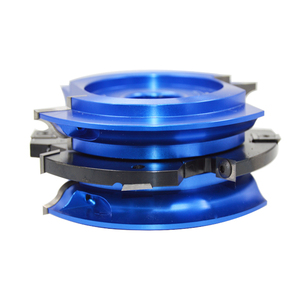






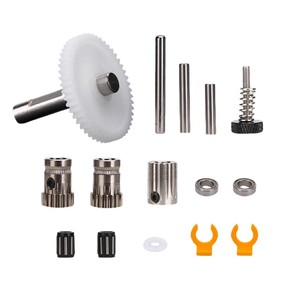
















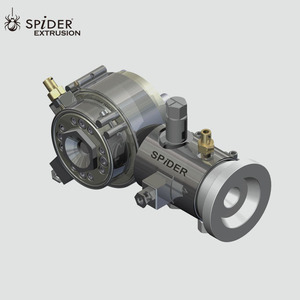
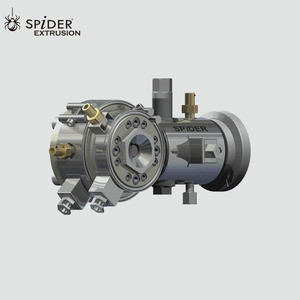
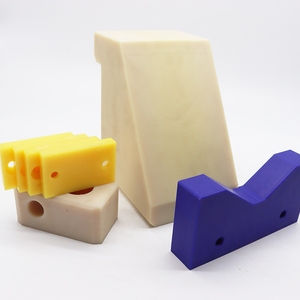





A die head for extruder is an essential component of an extrusion machine that gives the final shape to the product by passing the molten material through it. There are three types of die head for extruder; blown film die head, compound die head, and multi-layer die head.
The most common type of die head for extruder is a blown film die head. It is specially designed to produce plastic films. The die head compresses the melted material and then passes it through a circular opening. Once the molten material exits the die head, it is cooled with air to form a thin film. The blown film die head is often used to produce products like plastic bags, shrink wraps, and food packaging.
A compound die head is an extrusion die head that can form more than one shape in a single operation. This type of die head can be used for extrusion operations, punching, and additional forming operations. For example, in an extrusion operation, a compound die head may be used to produce a certain profile with a hole and a slot. This type of die head is often used to manufacture complex profiles and components with high precision and efficiency.
A multi-layer die head is an extrusion tool that is capable of producing multiple layers simultaneously. It is often used in the production of films, sheets, and coatings, where it is necessary to combine different materials with distinct properties. Each layer is independently controlled, allowing for precise layer thickness and distribution. This type of die head can produce products with a particular structure, such as barrier films, laminates, and coated materials.
Output range: The output capacity of a die head for extruder may be different based on its design and size. It can be customized to adapt to various production requirements and demands.
Die opening: The size and shape of the die head opening can be different according to different products and needs, such as round, square, and oval shapes. The die head opening size can also be adjusted to control the thickness and width of the extruded products.
Materials: The die head of an extruder is usually made of strong and durable materials. Depending on the application, it could be made from stainless steel, carbon steel, or other high-performance alloys.
Pressure and temperature resistance: The die head of an extruder needs to have good pressure and temperature resistance to work under high pressure and high temperature. Depending on the specific model and design, the pressure and temperature resistance levels may vary.
Precision control: Advanced die heads for extruders can achieve precise control over parameters such as pressure, temperature, and flow. These advanced models are equipped with sensors, controllers, and automation systems to ensure consistent and accurate extrusion processes.
Cleaning is the most basic and important maintenance for an extruder die head. After each use, the die head should be thoroughly cleaned to remove any residue or contaminants. This can prevent blockages and ensure the quality of subsequent extrusion products.
Regular inspection of the die head is also essential. Check for signs of wear, damage, or corrosion. If any issues are found, they should be addressed promptly to avoid affecting extrusion performance and product quality.
For some die heads that require lubrication, it is important to apply the appropriate lubricant regularly to ensure smooth operation.
If the die head of an extruder needs to be disassembled for maintenance or cleaning, it should be done following the manufacturer's instructions carefully to avoid damage and ensure proper reassembly.
For more specialized maintenance, it is recommended to follow the manufacturer's guidelines or consult a professional service provider.
The die head for extruder plays a vital role in various industries and applications. Here are some of the common scenarios where the die head is used:
The die head is widely used in the extrusion of plastic pipes. The die head can help the molten plastic material to be formed into the shape of the pipe. Different kinds of plastic pipes, such as PVC pipes, PE pipes, and PPR pipes, can be produced by the die head for extruder in various diameters and configurations to meet different requirements in construction, water supply, and other fields.
The die head for extruder is also used in the production of blown films. By using the die head for extruder, the molten plastic material can be formed into a thin film or sheet. These blown films are widely used in various industries, including packaging, agriculture, and construction. The die head for extruder can produce different types of blown films, such as LDPE, LLDPE, and HDPE films, to meet the requirements of different application scenarios.
Wire and cable coatings are another common application scenario of the die head for extruder. The die head for extruder can coat the wires or cables with insulating materials. It can also produce the outer sheathing of wires or cables, protecting them from environmental factors.
The die head for extruder can also be used in profile extrusion. It is suitable for producing plastic profiles with various shapes and cross-sections, such as decking, window frames, and trim. The die head for extruder can help create customized plastic profiles for different industries and applications.
The die head for extruder can also be used in foam and composite extrusion. It is suitable for producing plastic foam boards, profiles, and composite materials. The die head can help control the extrusion process to achieve the desired product characteristics, such as lightweight, insulation, and strength.
When choosing a die head for extruder, buyers should start by considering the material they are working with and the desired end product. The die head for extruder should be compatible with the specific plastic material. This means considering factors such as melt flow properties, temperature range, and viscosity. Also, consider the size and shape of the final product. The extrusion die should be able to create the desired dimensions and features of the end product.
Buyers should consider the extrusion process and the type of die head that will work best. Depending on the project, an inline die or crosshead die may be required. The quality of the die head for extruder should not be overlooked. Choose a reliable die head that offers consistent performance and produces high-quality products. This will greatly affect the quality of the products and the downtime.
Extrusion output is another important factor to consider when selecting an extruder head. The die output should be able to meet the production requirements. Buyers should also consider the extrusion process. There are two main ways of extrusion: hollow and solid. A solid die is used for products that do not have an empty profile, while a hollow die is used for profiles with an empty space or cavity. Buyers should look at the compatibility of the die head for extruder with the existing equipment. Consider the size, connections, and mounting options to ensure a seamless integration.
Finally, buyers should consider the ease of maintenance of the die head. It should be easy to disassemble and clean. This will help to reduce downtime and optimize production. Also, consider the cost of the die head for extruder, and choose a product that falls within the budget while meeting the production requirements.
Q1: What is the function of a die head in an extruder?
A1: The die head for an extruder is the final component of the extruder barrel. It is used to shape and cut plastic materials as they are pushed through the extrusion machine. The die head is engineered with a specific shape and opening that the plastic material is forced through to create the desired product. Some die heads are simple round holes that are used to create products such as pipes and tubes. Other die heads are more complex and can be used for products like window frames and insulation.
Q2: What is the difference between a single screw die head and a twin-screw die head?
A2: The main difference between a single screw die head and a twin-screw die head has to do with the extrusion process itself. A single screw die head pushes the material through with the help of a motor, while a twin-screw die head uses two screws to push the material. The twin-screw die heads are more efficient and are often used in large scale productions. The single-screw die head is better for smaller-scale productions.
Q3: What is the difference between a standard die head and a custom die head?
A3: A standard die head is one that has been mass-produced and is used on many different types of extruders. A custom die head, on the other hand, is one that is made to order and is designed to fit a specific extrusion machine. Custom die heads can be made in a variety of sizes and shapes to fit the needs of the customer.